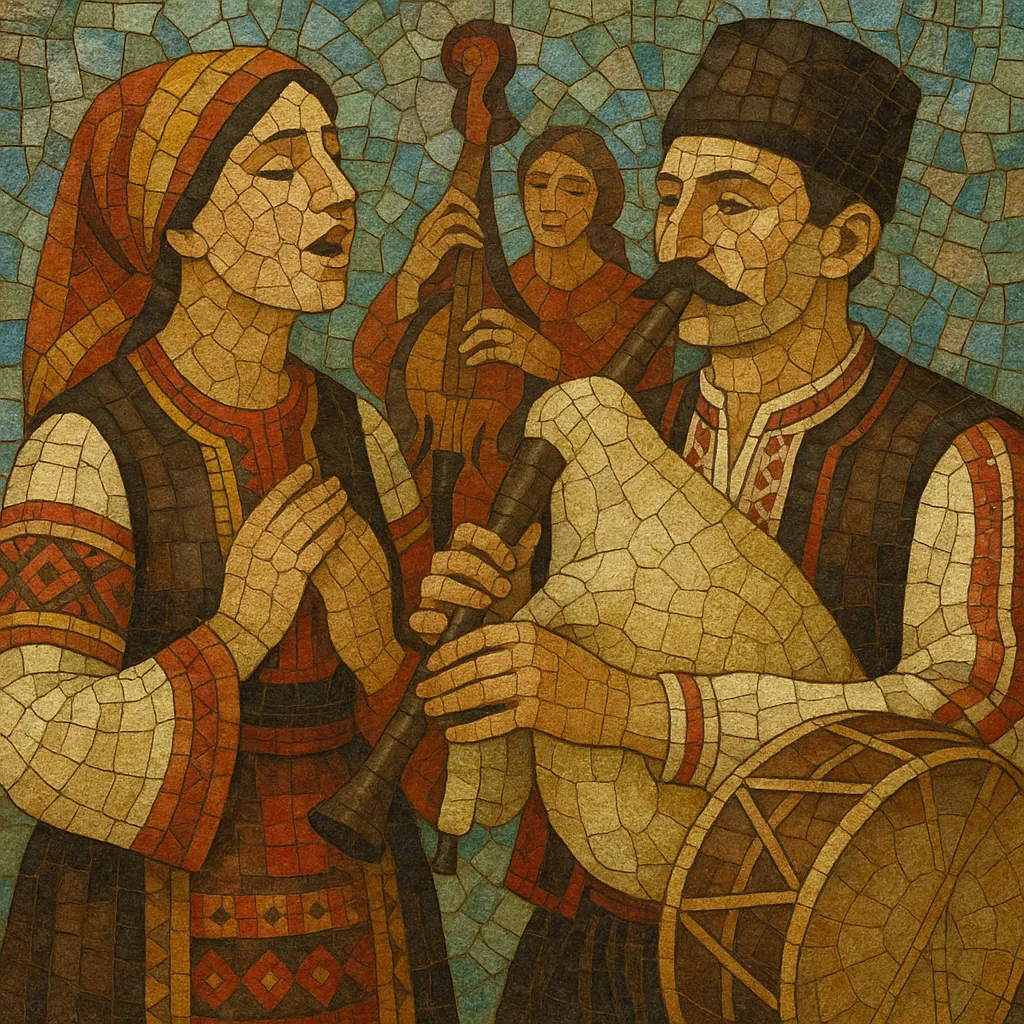Bulgarian folk music is the traditional music of Bulgaria, characterized by distinctive regional styles, asymmetric additive meters, and a unique vocal aesthetic.
It features close-interval diaphonic singing (often seconds), powerful open-throated timbre, and drone-based textures. Typical instruments include the gaida (bagpipe), kaval (end-blown flute), gadulka (bowed lute), tambura (long-neck lute), tapan (double-headed drum), and accordion. Dances (horo) use complex rhythms such as 7/8, 9/8, and 11/16, with region-specific accents.
The repertoire spans work songs, ritual calendar songs, heroic and hajduk ballads, wedding tunes, and chain-dance instrumentals. In the 20th century, state ensembles and arrangers elevated village traditions to the stage, while the famed female choirs brought global attention to Bulgaria’s striking polyphony.
Bulgarian folk music has deep roots in village life, seasonal rituals, and communal dance across historical regions such as Thrace, the Rhodopes, Shopluk, Dobrudzha, and Macedonia (in its broader folkloric sense). Songs accompanied work and rites of passage, while horo dances in open meter bound communities together.
The music absorbed elements from neighboring and overlapping cultural spheres over centuries, including Byzantine chant (drone and modal concepts) and Ottoman/Turkish makam practice (ornamentation and modal coloring), alongside Slavic melodic tendencies and shared Balkan dance rhythms.
During the 1800s and early 1900s, collectors and ethnographers began documenting melodies, texts, and regional styles. Village instruments like the gaida, kaval, and gadulka coexisted with newer additions such as the accordion, while local dance types (rachenitsa, pravo horo, paidushko, kopanitsa) solidified as emblems of community identity.
After 1944, the state supported professional folk ensembles that arranged village music for choirs and orchestras. Composer-arranger Filip Kutev’s State Ensemble (1951) set a model for polished concert versions using choral polyphony, folk orchestration, and staged dance. Radio and state labels disseminated these sounds throughout the country.
From the 1970s–1980s, Bulgarian women’s choirs (e.g., the Bulgarian State Television Female Vocal Choir, later known through “Le Mystère des Voix Bulgares”) achieved international acclaim for their tight harmonies, microtonal inflections, and luminous timbres. Bulgarian wedding music and virtuoso improvisers (e.g., clarinet and accordion players) further expanded the idiom’s visibility with dazzling, jazz-adjacent energy.
Since the 1990s, traditional and staged styles coexist with fusion projects that blend folk with jazz, classical, ambient, and pop. Regional traditions remain vibrant at festivals and in community ensembles, while conservatories and folklore academies train new generations of singers, instrumentalists, and arrangers.


